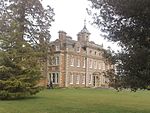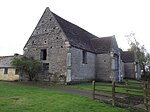Ashleworth Ham (grid reference SO833263) is a 104.73-hectare (258.8-acre) biological Site of Special Scientific Interest. It is a large area of grassland on the Severn floodplain, north of Ashleworth in Gloucestershire, England. It is registered as a Site of Special Scientific Interest and was notified in 1974 and renotified in 1985. Ashleworth Ham received this designation because it is one of three sites in the Severn Vale where migratory waterfowl winter.The site has three units of assessment and is part managed as a nature reserve by the Gloucestershire Wildlife Trust. The nature reserve is unit 1 (grid reference SO830265) and is a 45-hectare (110-acre) area. Unit 2 (grid reference SO833261) is a 55-hectare (140-acre) site and unit 3 (grid reference SO829258) is a 4-hectare (9.9-acre) site, and are areas to the east of the nature reserve.The site is fen, marsh, swamp lowland, open water ditches, neutral grassland and hedges divide many of the fields.Access to the reserve is prohibited in winter, but the birds may be viewed from hides in Meerend Thicket. The Thicket is a steep wooded bank and indicates the former much higher boundary of the Severn. In addition, some parts of the Ham are of special botanical interest. Meerend Thicket is listed in the ‘Tewkesbury Borough Local Plan to 2011’, adopted March 2006, Appendix 3 'Nature Conservation',' as a Key Wildlife Site (KWS).This part of the Vale, which is alluvium over Lower Lias clay, has been greatly affected by drainage and other agricultural improvements. A public enquiry resulted in the exclusion of the reserve from the Internal Drainage Board scheme.











